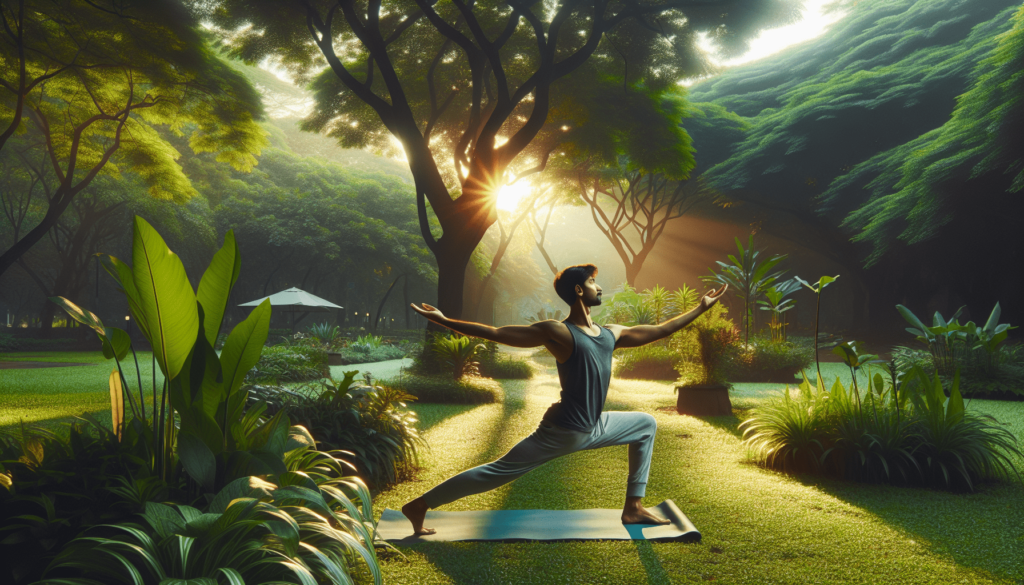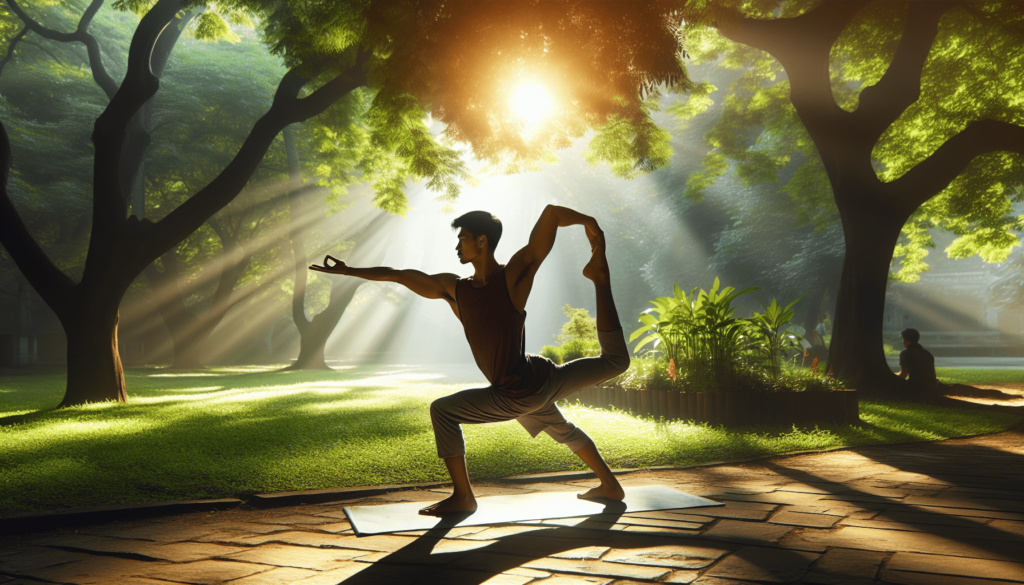Is your body feeling tighter than your favorite pair of jeans after Thanksgiving dinner? Well, you’ve stumbled onto something that might just hold the key to unlocking a more flexible, healthier you. That’s right, we’re going to talk about stretching—no, not the kind that involves the truth after you’ve stayed out too late—but the delightful, sometimes awkward, art of pulling your limbs in various directions.
The Marvelous Science Behind Stretching
Why Stretching Feels So Good
Let’s unravel the science first, because who doesn’t want to impress people at dinner parties with knowledge about muscle fibers? When you stretch, you’re essentially saying a gentle hello to all those muscles that have been lounging around like couch potatoes. It’s akin to giving your muscles a little pep talk, reminding them that they can do more than just hold you upright like a Jenga tower.
Your muscles have these tiny sensors called muscle spindles. Think of them as those overly concerned parents watching your every move. When you stretch too quickly, these spindly sirs send alarm signals to your brain, shouting, “Hold on! You’re going too far!” This is when you feel that glorious relief when you’ve stretched enough to make the spindles not freak out.
The Benefits of Stretching: You’re Not Just a Pretzel
While stretching might make you look like a human origami project, it’s about more than saying, “Look what I can do!” Regular stretching has considerable benefits for your overall health:
- Increased Flexibility: You become less robot, more Gumby.
- Improved Range of Motion: Your dance moves now cover more than just side-to-side shuffling.
- Better Posture: No more pretending you’re an avatar for the Hunchback of Notre Dame.
- Reduced Muscle Tension and Stress: Because life is too short to walk around like a tightly wound spring.
- Enhanced Blood Circulation: You’re getting those blood cells a first-class ticket to all your body parts.
Feeling better already? We’re only getting started.
Stretching Basics: A Roadmap to Flexibility
Static vs. Dynamic Stretching: The Eternal Debate
Stretching seems simple, right? Yet, it’s as layered as a seven-layer dip. There are two main types of stretches: static and dynamic. Let’s break it down, because life’s too short for stretching your attention span.
-
Static Stretching: This is the kind where you hold a pose, contemplating life decisions or what you want for dinner. It’s slow, controlled, and held for about 20-30 seconds. Ideal for: Post-exercise cool-downs, yoga enthusiasts, and anyone wanting to ponder if they’ll really use that gym membership.
-
Dynamic Stretching: Picture dynamic stretching as an enthusiastic marching band, with controlled, movement-based stretches like arm circles, leg swings, and all that jazz. Ideal for: Pre-workout routines, those who believe in gently easing into the madness of exercise, and anyone who wants a more action-packed stretch.
How Not to Stretch: Common Mistakes and how to avoid them
Stretching may seem foolproof, but there are still a few banana peels you could slip on. Here are some mistakes to steer your flexible ship clear of:
- Bouncing Through Stretches: This isn’t a trampoline park. Bouncing can lead to injuries faster than you can say “ouch.”
- Holding Your Breath: You’re not a fish out of water. Remember to breathe. It’s free and rather essential.
- Ignoring Pain: There’s a fine line between a good stretch and snapping like a twig. If it hurts, in a bad way, abort mission.
- Skipping the Warm-Up: Stretching cold muscles is like demanding a random cat to perform tricks. They’re not going to cooperate.

A Journey Through Different Stretches
Neck and Shoulder Stretches: Freeing The Tension
Did you know that hunching over your laptop all day could transform your neck into something resembling a twisted towel? These stretches ensure that your head stays proudly on your shoulders (where it belongs).
-
Neck Tilt: Simply tilt your head to one side, imagining you’re listening intently to gossip. Hold for 30 seconds, then switch to the other side. Avoid being the cause of neck drama by not yanking your head.
-
Shoulder Shrug: Raise your shoulders up to your ears as if you’re dodging responsibility, hold, then release. Repeat and experience the sweet sense of relief in your shoulders.
Lower Back Stretches: Goodbye Desk Slump
Lower back stretches are just what the chiropractor ordered for when your desk posture more closely resembles that of a cooked shrimp.
-
Cat-Cow Stretch: Position yourself on all fours, transition between arching your back like a cat caught in rain and dropping your belly like a happy clamshell. Enjoy the spine liberation.
-
Child’s Pose: Kneel, sit back on your heels, stretch your arms forward, and think of the joys of napping at inappropriate times.
Leg Stretches: Venturing Beyond the Hamstring
Leg stretches are essential, especially for those who’ve ever underestimated how many leg muscles they have until they’ve been sore for eight days post-workout.
-
Quad Stretch: Grab one ankle, pull it towards your behind. Try not to fall over (or do, and make it look like a dance move).
-
Hamstring Stretch: Sit down, extend one leg, and reach towards your toes. Or just wave at them from a safe distance.
Stretching for Different Lifestyles
The Sedentary Sitter’s Guide to Stretching
Are your days spent in positions that turn you into a glorified chair accessory? Desk jobs can do that to you. Break free with simple desk stretches like seated torso twists and wrist stretches to save yourself from becoming one with your office chair.
The Athlete’s Stretch: Taming the Muscle Beast
Athletes can get even stiffer than a triple-shot espresso. Focus on dynamic pre-workout stretches to prepare your high-achieving muscles, post-workout static stretches are great to soothe your muscles.
Stretching for Seniors: Gentle Transitions to Better Health
Seniors aren’t required to jump through hoops; stretching can be a gentle, gradual process. The key is consistency and not straining those seasoned joints. Think gentle calf stretches or seated stretches. You might miss the days of twisting and shouting, but gentle stretching is your best bet now.

When to Stretch for Maximum Results
Timing is everything. When should you bless your muscles with the gift of stretch? Let’s unravel the mystery.
Pre-Workout: Getting the Body Ready
Stretching dynamically before workouts helps prime your body in a way that doesn’t come with motivational speeches. Dynamic stretches prepare muscles by gradually increasing heart rate and range of motion. Think of your pre-workout stretches as a lively prelude to exercise.
Post-Workout: The Cool Down
Post-workout stretching is like the goodnight kiss after a magical date with exercise. This is time for static stretches; they help to increase flexibility, reduce muscle soreness, and promote relaxation.
Morning or Night: Stretch-O-Clock
Stretching isn’t just for when you’re about to scale Everest or run a marathon. It can be you versus the blanket each morning or winding down with stretches before you reach your REM dream parade.
Stretching Myths: Separating Fact from Fiction
“Stretching Before Exercise Prevents Injuries”
You might have heard that stretching before a workout is like a magic shield against injuries. Well, true as it may sound, it’s more about how you stretch (dynamic not static) and warming up properly.
“The More You Stretch, the Better”
Stretching isn’t a competitive sport. There’s such a thing as going too far. Overstretching can lead to injuries and turn you into a real-life Gumby gone wrong.
Stretching Mistakes People Learn the Hard Way
We could write a book on common stretching mistakes, like treating static stretching as a race or assuming any pain is just temporary discomfort. Avoid these blunders by tuning into your body’s signals and not competing to become Cirque du Soleil’s next star.
Tailoring Your Stretching Routine
Creating A Personal Stretching Regimen
Just as everyone has their own way of arranging spice racks, everyone has different stretching needs. Tailor your routine to your lifestyle and body type. Consider what works for you, much like you’d customize your sandwich order.
Avoiding Stretching Plateau
Feeling stuck in a stretching rut? Spice things up! Incorporate various stretches, increase your hold time, or simply alter your routines every so often to keep your body guessing and flexing.
Health Benefits of Regular Stretching: The Long View
Stretching is your body’s thank-you note to itself. Rather like exercise, it promises long-term benefits like increased flexibility, decreased risk of injury, and peace of mind, knowing you’re doing a little something for your overall well-being.
Flexibility: The Fountain of Youth
Maintaining flexibility is as magical as finding the fountain of youth without a map. It helps in preserving that youthful stride we all love and reduces aches that creep in over time.
Injury Prevention: The Flexible Very Rarely Breaks
Your body’s defense mechanism against trips, slips, and unfortunate dance moves people can’t unsee: flexibility! Stretching builds more resilient muscles less prone to snapping.
Mental Health Boost: Be More Bendable, Less Breakable
Stretching would make an outstanding therapist. It’s been shown to reduce stress levels, improve sleep quality, and boost overall mood. Look at you, investing in self-care without a therapist’s bill.
Stretching in Everyday Life: Surprising Places to Stretch
Think stretching only happens at the gym or inside yoga studios? Oh, how you’re missing out!
In the Shower: A Warm Start
Let me paint you a picture: you, in the shower, hot water cascading, and meanwhile, stretching each limb as if you’re the only act on the world’s smallest stage. There’s a whole world of stretching possibilities under that showerhead!
At Your Desk: Office Flexibility
Break the monotony of desk life. Rolling your wrists, stretching your arms, or doing a few calf raises at your desk isn’t just productive; it’s a need-based dance-off against stiffness.
While Watching TV: Binge-and-Stretch
Sure, you could sit and do nothing while binging on endless shows, but why not throw a seated hamstring stretch into the mix? Multitasking for the win!
Conclusion: Embrace the Stretch Renaissance
As with any journey involving turning yourself into a more flexible version of you, one must remember that stretching is about balance, both literally and figuratively. Stretching isn’t just a physical lark; it’s a lifestyle. So harness your inner bendy being, even if it resembles an octopus with a caffeine buzz. Stretch, laugh at your own ineptitude, but most importantly, enjoy it. After all, this is stretching—not rocket science—and if your objective was indeed to become a human knot, congratulations! You’re halfway there. Now, carry on with your newfound elasticity, whether for low-key daredevil feats or simply because your jeans now require less effort to wiggle into.
